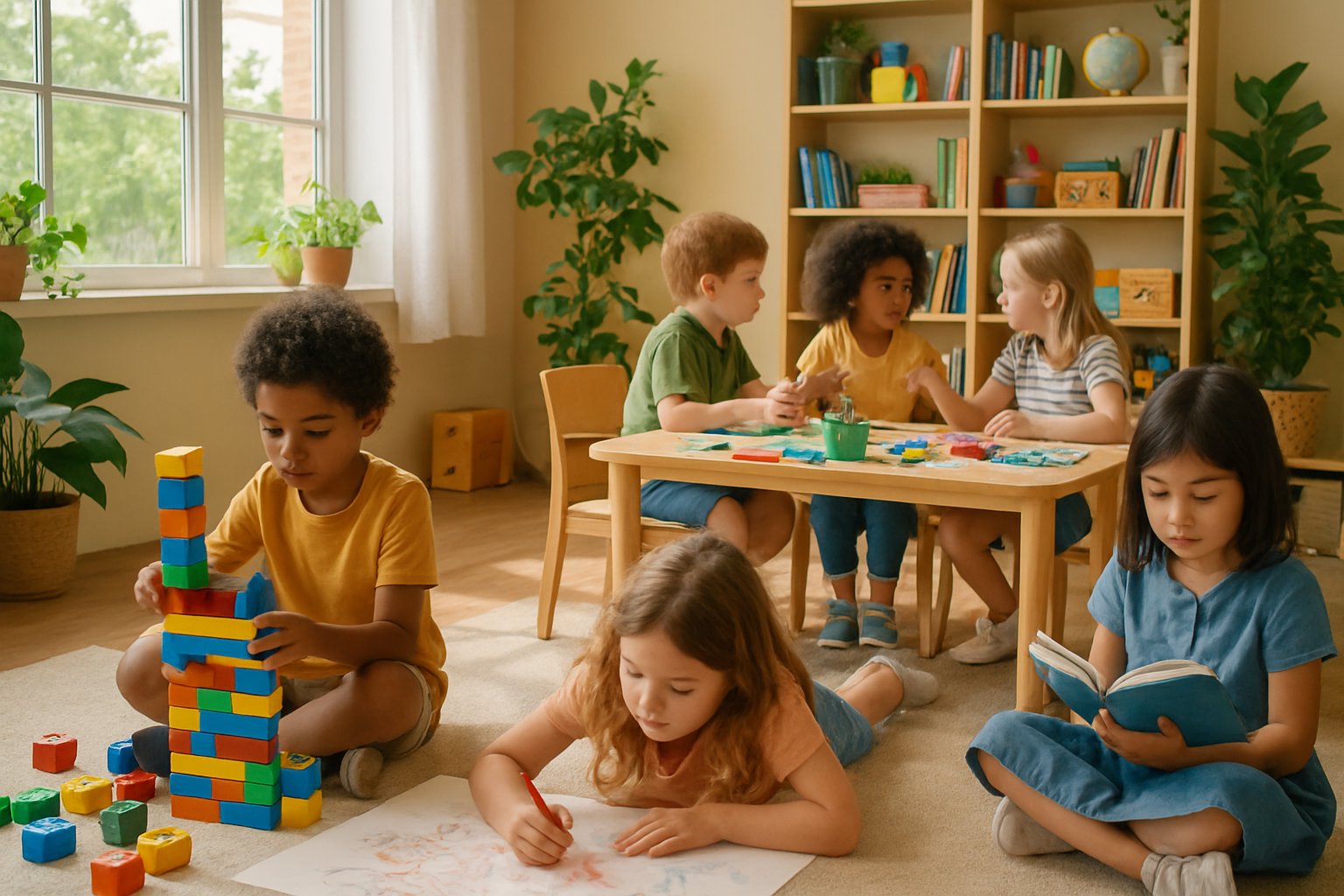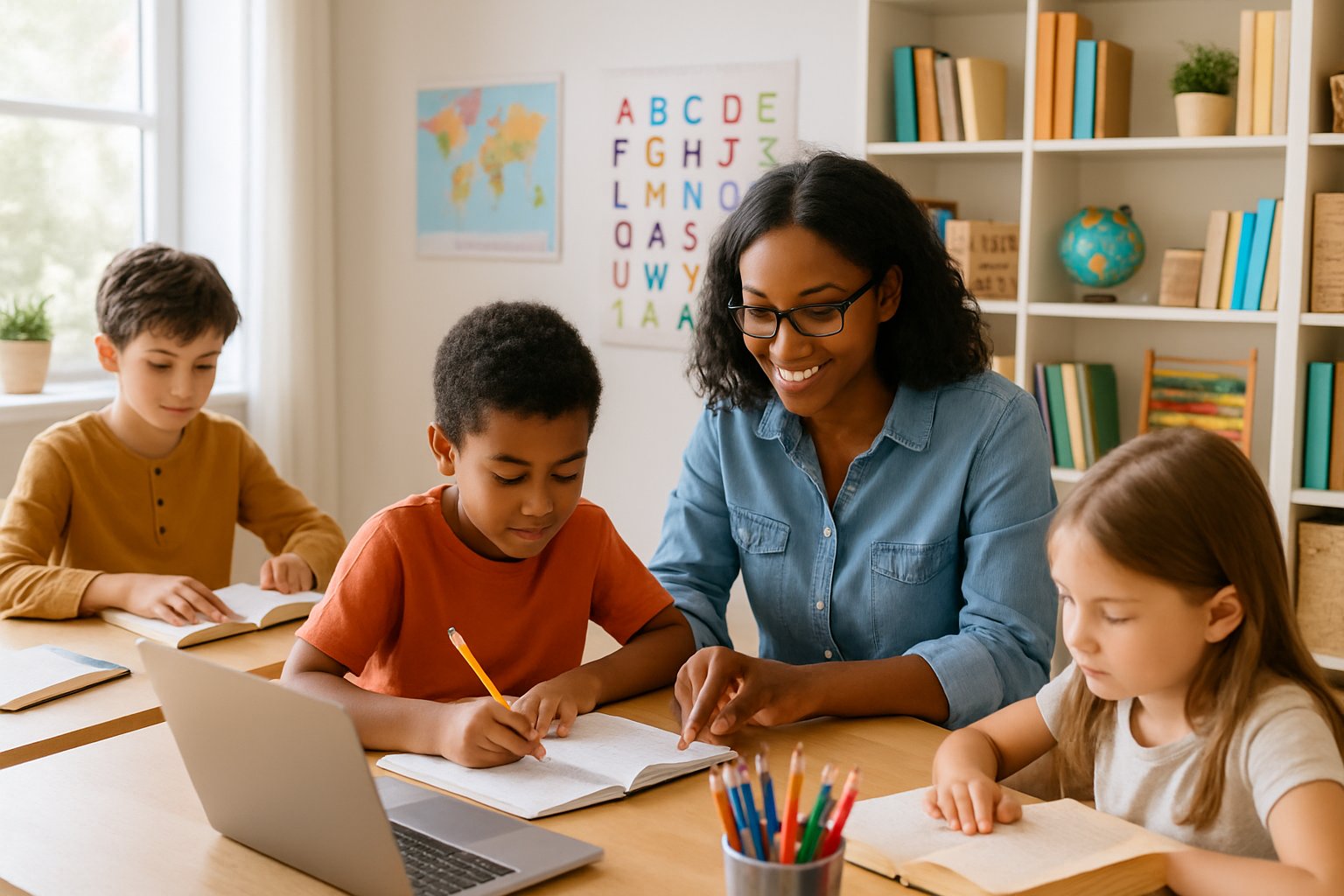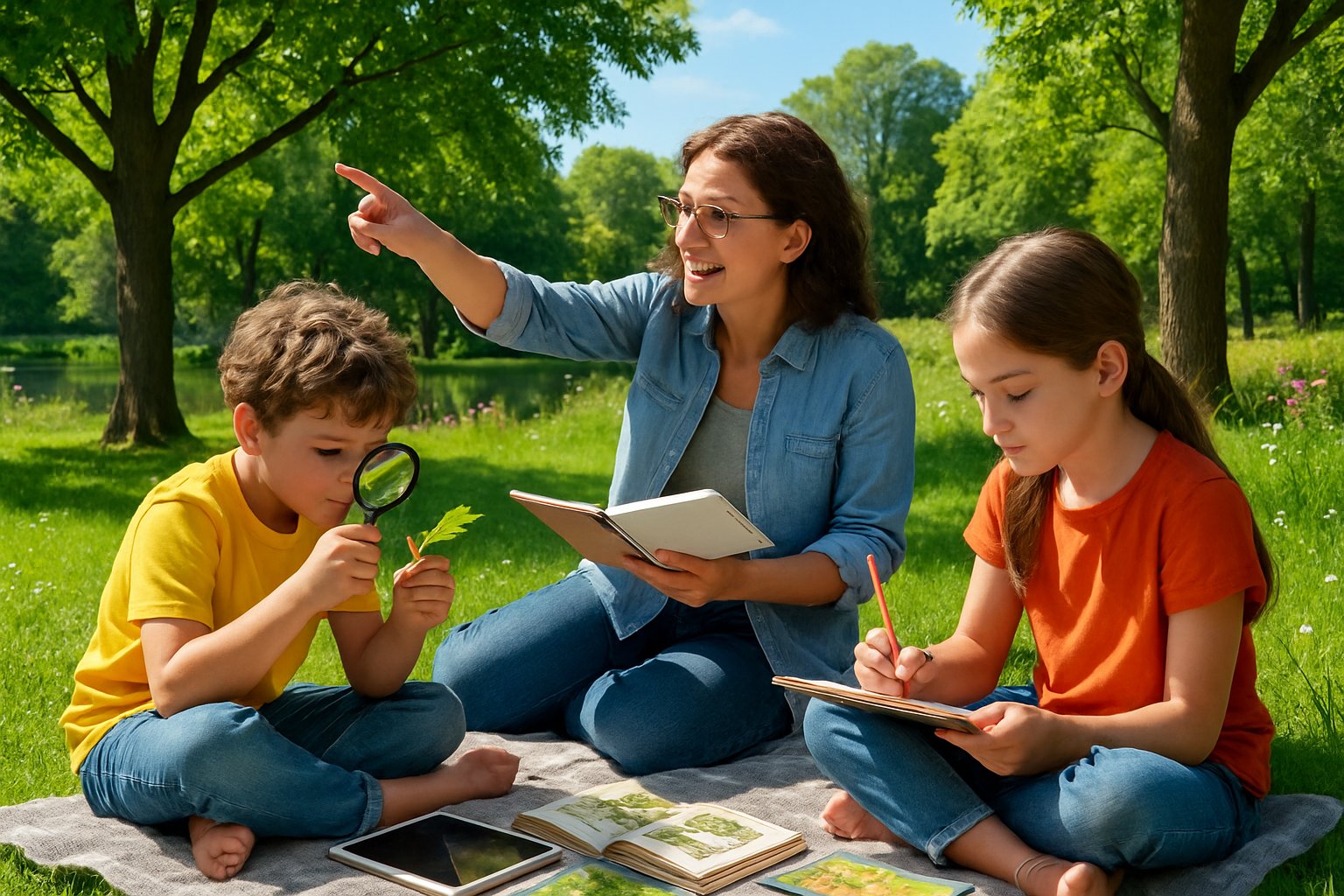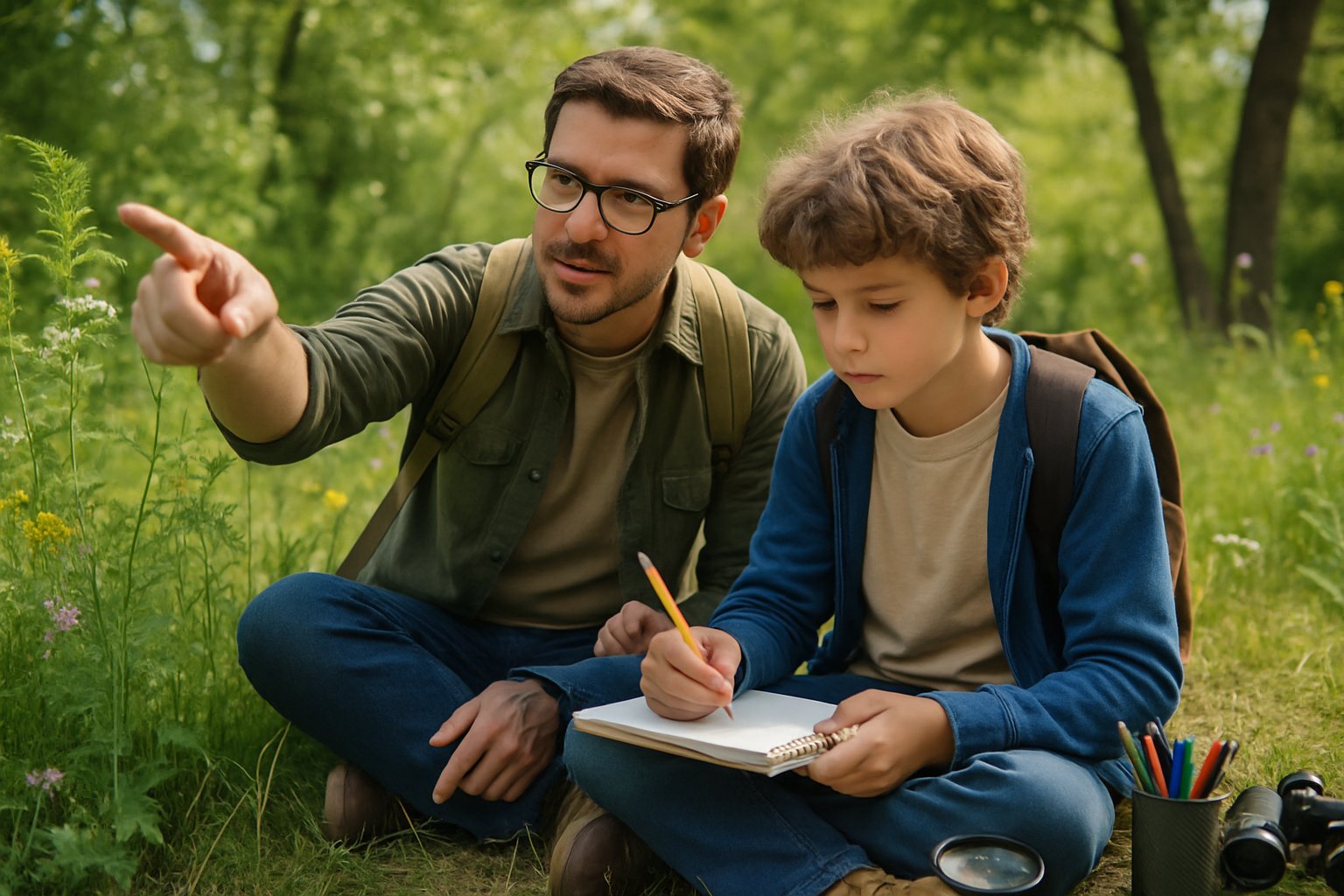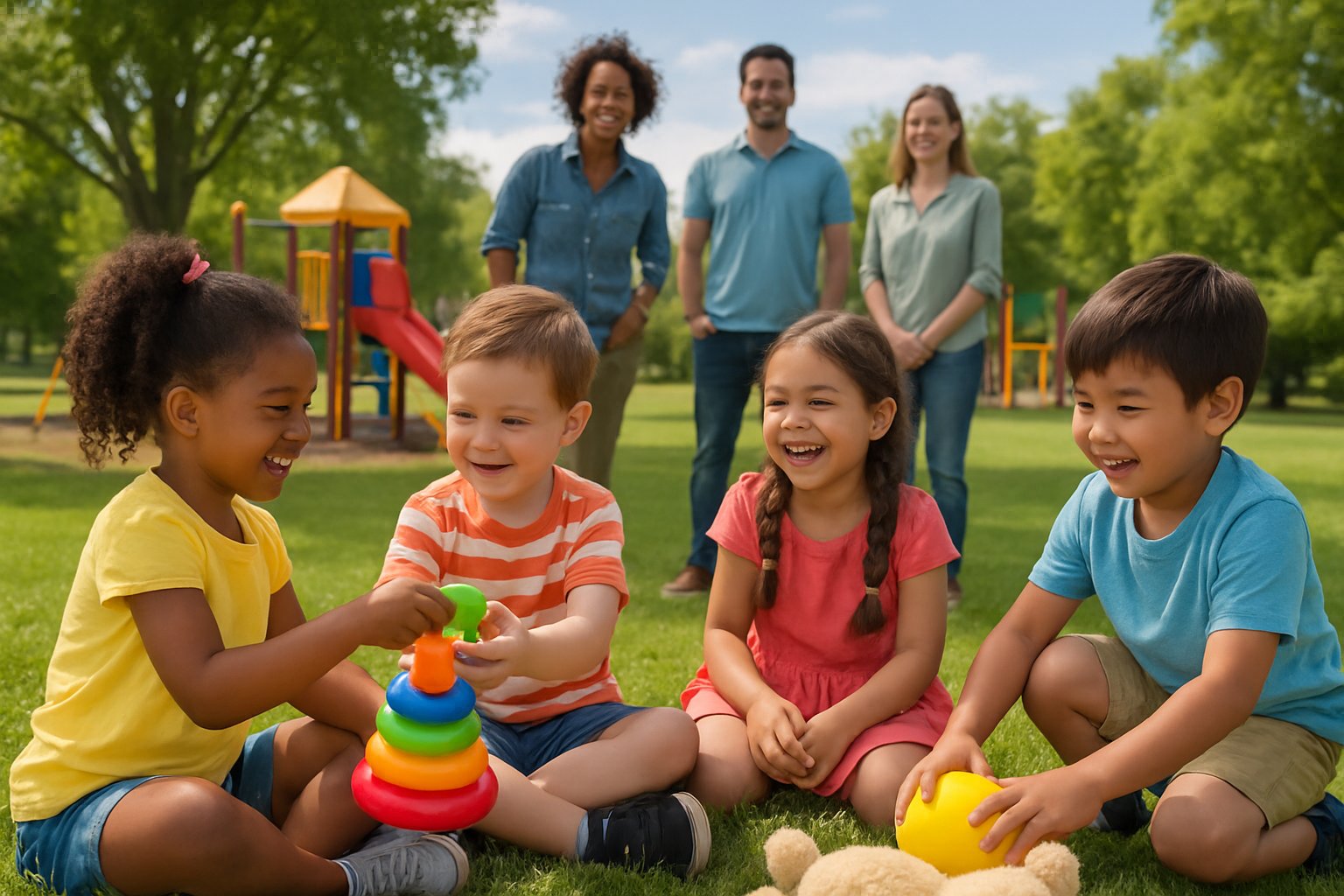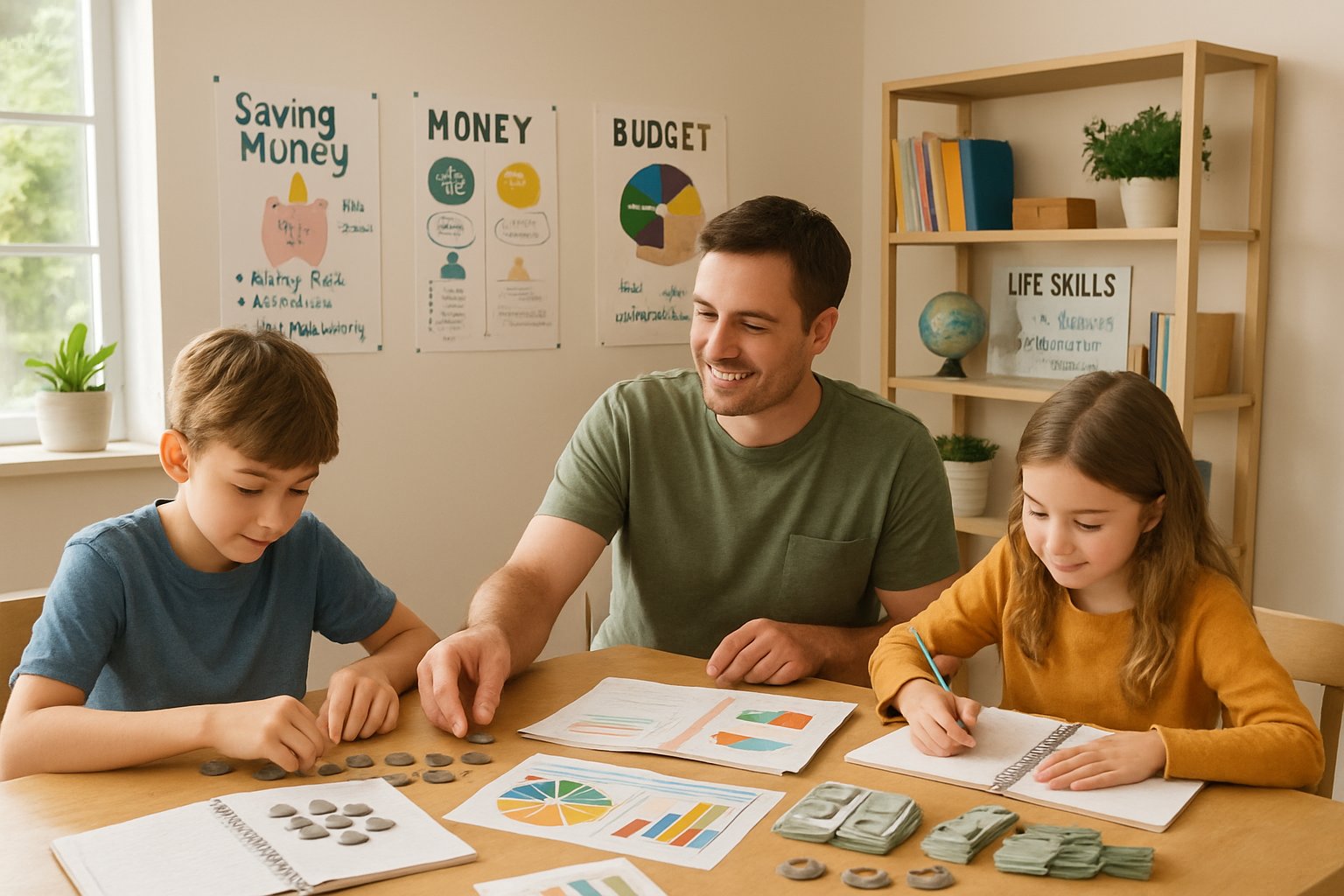Setting Clear Learning Goals at Home
Effective home learning starts with well-defined goals that connect to school standards and break down into manageable steps.
Parents need specific targets and measurable checkpoints to track their child’s progress meaningfully.
Aligning Home Learning With Academic Standards
Parents should start by reviewing their child’s grade-level academic standards for core subjects like math, reading, and writing.
These standards show what skills children need to master by the end of each school year.
Most states publish these standards online for free.
Parents can find them by searching for their state’s education department website.
The standards break down learning into specific skills and concepts.
For children with special needs, parents should focus on their child’s IEP goals first.
These goals are already designed to meet the child’s specific learning needs.
Working with your child’s team of professionals helps create more effective goals and plans.
Parents can create a simple checklist of skills their child needs to learn.
They should pick 3-5 main goals to focus on each month.
This keeps learning focused and prevents feeling overwhelmed.
Creating Measurable Milestones
Good learning goals need clear ways to measure progress.
Parents should make goals specific, realistic, and measurable to keep their child’s learning on track.
Instead of saying “improve reading,” parents can set goals like “read 20 minutes daily” or “finish two chapter books this month.”
These goals are easy to track and celebrate.
Weekly milestones work well for most families.
Parents can check if their child completed math lessons, finished writing assignments, or practiced spelling words.
Daily goals work better for habits like reading time.
Parents should write down these milestones in a simple chart or notebook.
They can mark off completed goals with checkmarks or stickers.
This visual tracking helps children see their progress and stay motivated.
Setting SMART goals helps students become active participants in their learning.
Children feel more motivated when they can see clear evidence of their progress.
Selecting Progress Tracking Methods
Parents can choose from several effective methods to monitor their child’s learning at home.
Each approach offers unique benefits for documenting growth and identifying areas that need attention.
Using Checklists and Rubrics
Checklists provide a simple way for parents to track specific skills their child has mastered.
They work well for subjects like math where skills build on each other.
Parents can create checklists for reading milestones, math facts, or writing skills.
Each item gets checked off when the child shows they understand it.
Sample Reading Checklist:
- Knows letter sounds
- Reads simple words
- Understands basic sentences
- Reads short stories
Rubrics help parents measure the quality of their child’s work.
They show different levels of skill from beginner to advanced.
A writing rubric might rate grammar, ideas, and organization on a scale of 1-4.
This helps parents see exactly where their child needs help.
Standardized assessments often use similar rating systems.
Parents can use rubrics to prepare their child for these tests.
Maintaining Learning Journals and Portfolios
Learning journals let parents track their child’s daily progress in writing.
The child writes about what they learned each day.
Parents can ask simple questions like “What was hard today?” or “What did you enjoy learning?”
These entries show how the child thinks about learning.
Journal Benefits:
- Shows writing improvement over time
- Reveals learning challenges
- Builds reflection skills
- Creates learning memories
Portfolios collect samples of the child’s work throughout the year.
Parents should save examples from different subjects and dates.
A good portfolio includes early work, middle work, and recent work.
This shows clear progress over time.
Digital apps and software can help organize portfolios electronically.
Parents can take photos of artwork and assignments.
Utilizing Reading Logs and Booklists
Reading logs track how much and how often a child reads.
Parents can record the book title, pages read, and reading time.
Simple logs work best for younger children.
Older children can write short summaries of what they read.
Reading Log Elements:
- Book title and author
- Start and finish dates
- Number of pages
- Child’s rating (1-5 stars)
- Brief notes about the story
Booklists help parents choose appropriate books for their child’s reading level.
They can track which types of books their child enjoys most.
Parents should include different types of books like fiction, non-fiction, and poetry.
This helps develop well-rounded reading skills.
Tracking methods can show reading patterns over time.
Parents might notice their child reads more on weekends or prefers certain topics.
Many schools provide reading level guidelines.
Parents can use these to select books that challenge but don’t frustrate their child.
Observing and Documenting Daily Learning
Parents can track their child’s growth by watching daily activities and writing down what they see.
Simple methods like keeping notes, making videos, and listening to children explain their learning help create a clear picture of progress.
Recording Observations Effectively
Parents should observe and document each child’s development as part of their daily routine.
This process helps them understand what their child knows and what they need to work on next.
Quick Note-Taking Methods:
- Keep a small notebook nearby during activities
- Use sticky notes to jot down key moments
- Write brief observations on a phone or tablet
- Record the date and activity for each note
The most useful observations focus on specific behaviors.
Instead of writing “did well in math,” parents should note “solved three addition problems without help” or “counted to 20 correctly.”
Becoming a skilled observer takes time and practice.
Parents don’t need to write everything down.
They should focus on moments that show learning or growth.
Simple checklists work well for tracking skills.
Parents can make lists of goals and check them off as their child masters each one.
Leveraging Video Diaries
Video recordings capture learning moments that written notes might miss.
Parents can record their child working on projects, reading aloud, or explaining their thinking during activities.
Short 2-3 minute videos work best.
Longer recordings become hard to review later.
Parents should focus on capturing key moments rather than entire lessons.
Best Times to Record:
- When a child solves a difficult problem
- During creative play or building activities
- While explaining their artwork or projects
- Reading a favorite book aloud
Videos help parents see patterns in their child’s learning over time.
They can compare recordings from different months to track progress and growth.
Parents should store videos in organized folders by subject or date.
This makes it easier to find specific examples later when reviewing progress.
Capturing Learning Through Narration
Narration helps assess a child’s understanding of what they’ve learned.
Parents can ask their child to tell them about a book they read or explain how they solved a problem.
This method works well after reading time or completing activities.
Children naturally want to share what they’ve discovered or created.
Simple Narration Questions:
- “Tell me about the story we just read”
- “How did you figure out that answer?”
- “What was your favorite part and why?”
- “What would you do differently next time?”
Parents should listen without interrupting.
They can write down key points the child makes or interesting connections they notice.
Documentation of narrations can be simple.
A brief written record of the discussion shows what the child understood and remembered.
Regular narration sessions help children practice explaining their thoughts.
This skill becomes more important as they grow older and tackle harder subjects.
Assessing Through Projects and Assignments
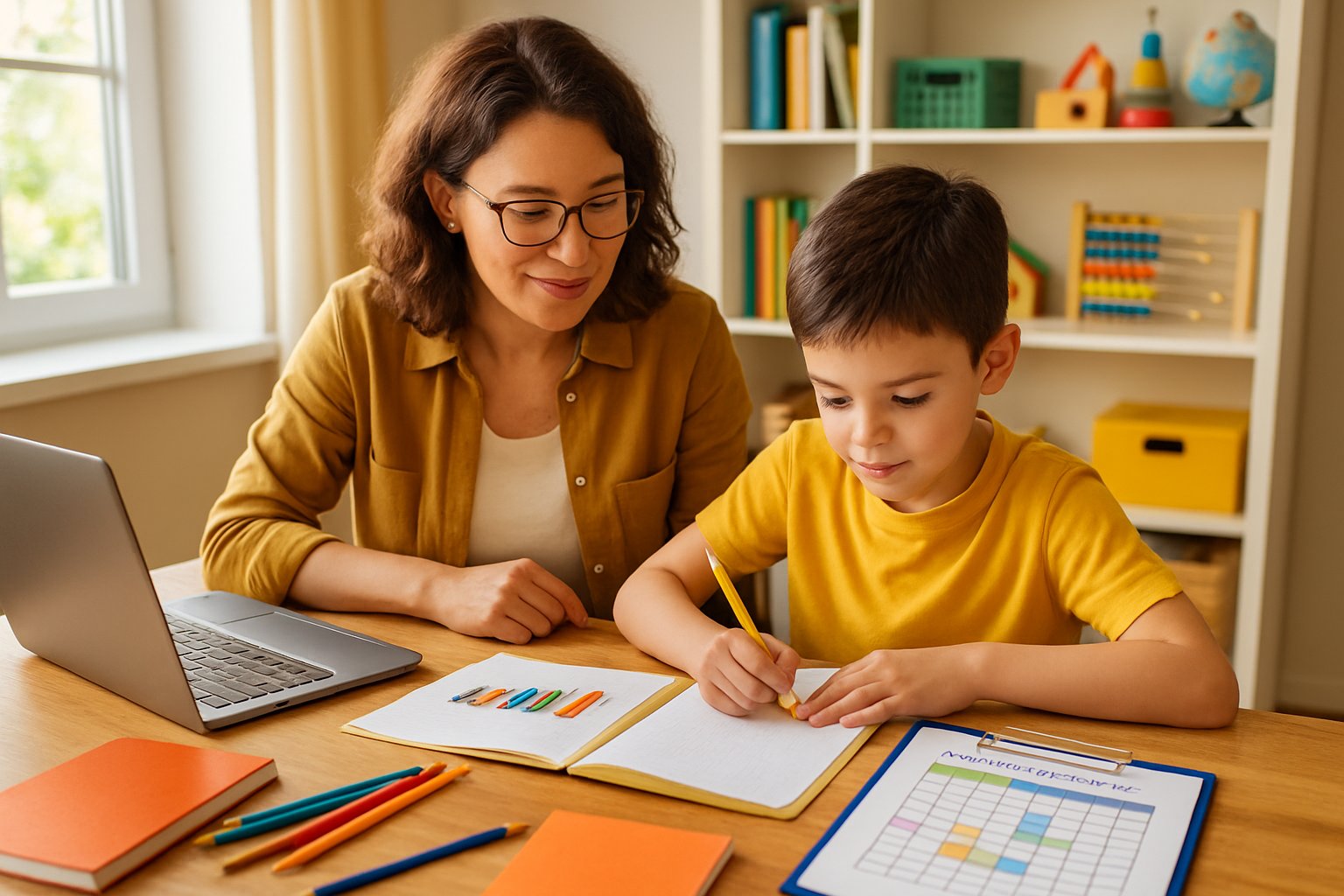
Projects offer a powerful way to measure how well children understand and apply what they learn.
They let parents see skills like problem-solving, creativity, and critical thinking in action.
Designing Meaningful Projects
Good projects connect to real life and match the child’s interests.
A history project might include making a poster about ancient Rome or writing a diary entry from a soldier’s view.
Start with clear goals.
Parents should know what skills they want to measure before the project begins.
Writing skills, research abilities, and creativity are common targets.
Match projects to learning styles.
Some children learn better by building models.
Others prefer writing reports or creating art pieces.
Set realistic timelines.
Breaking big projects into smaller steps helps children stay on track.
Provide choices when possible.
Let children pick their own topics within the subject area.
This keeps them more engaged and motivated.
Evaluating Project-Based Learning Outcomes
Use rubrics to grade fairly.
A rubric breaks down the project into parts like content, creativity, and presentation.
Parents can rate each part separately.
Look at the process, not just the final product.
Notice how the child researches, plans, and solves problems along the way.
These skills matter as much as the end result.
Document the learning journey.
Take photos of work in progress.
Save rough drafts and notes.
This shows growth over time.
Ask children to explain their work.
When they talk about their projects, parents can see how deeply they understand the topic.
This also builds communication skills.
Compare projects over time.
Keep examples from different months to track improvement in quality and complexity.
Implementing Formal and Standardized Assessments
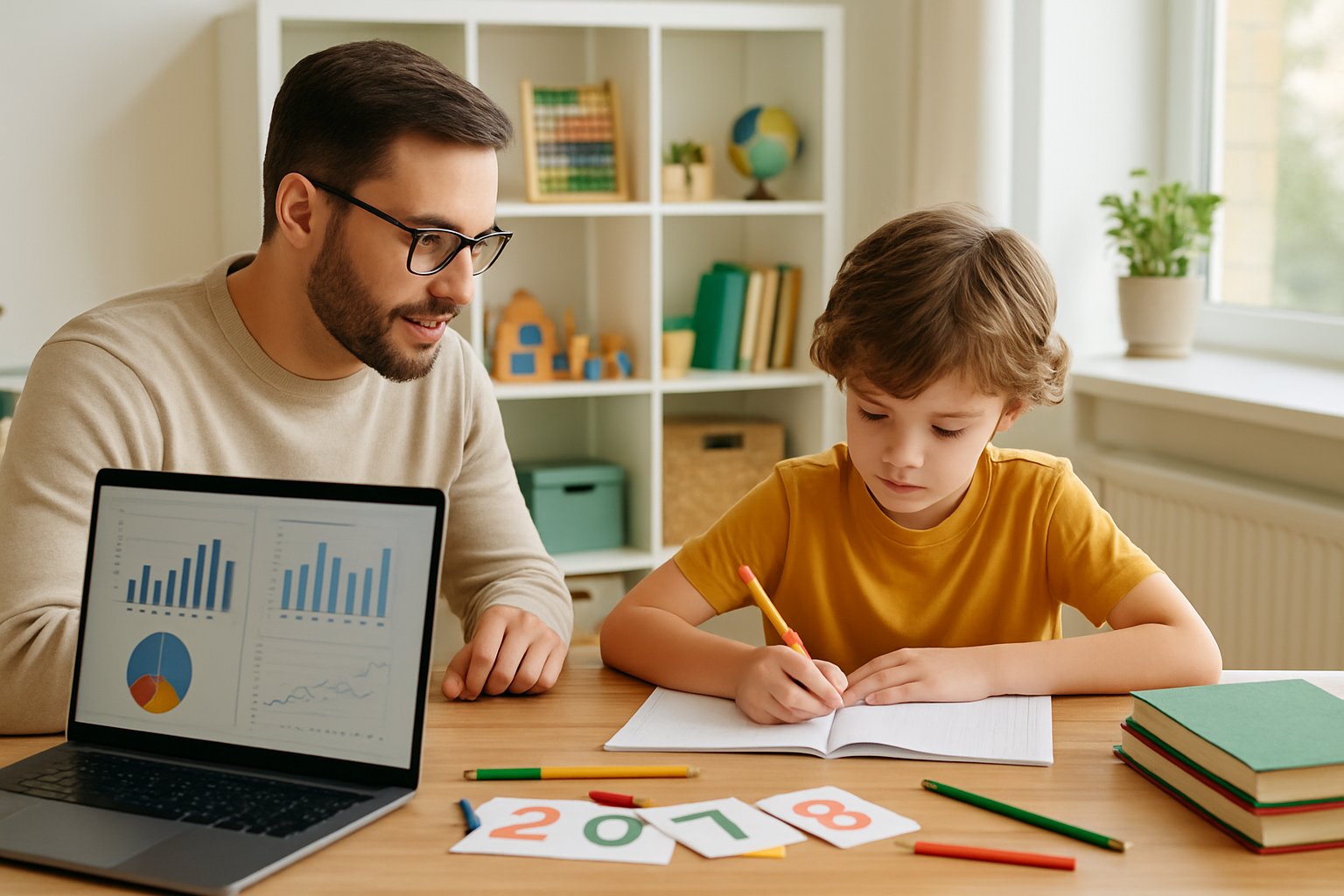
Formal evaluations provide structured ways to measure a child’s academic progress using specific tools and methods.
Standardized tests offer comparison data against age-appropriate benchmarks to identify learning strengths and areas needing support.
Conducting Formal Evaluations at Home
Parents can implement formal assessment examples by creating structured testing environments that mirror classroom conditions.
These evaluations require specific materials, time limits, and scoring procedures.
Setting Up Assessment Conditions:
- Choose a quiet, distraction-free room
- Ensure proper lighting and comfortable seating
- Remove electronic devices and toys
- Schedule assessments during the child’s peak energy hours
Parents should establish clear expectations before beginning any formal evaluation.
They need to explain the purpose and importance of the assessment to their child in age-appropriate language.
Types of Formal Home Assessments:
- Academic skill tests – Math computation, reading comprehension, spelling
- Portfolio reviews – Collection of work samples over time
- Performance-based tasks – Science experiments, writing assignments
- Timed assessments – Speed and accuracy measurements
Documentation plays a crucial role in formal evaluations.
Parents should record scores, observations, and any factors that might affect performance such as illness or fatigue.
Incorporating Standardized Testing
Standardized tests are designed with norm groups to compare a child’s performance against peers of the same age or grade level.
These assessments follow strict administration procedures and scoring guidelines.
Parents can access standardized testing through several channels.
Many educational publishers offer home versions of popular assessments for purchase.
Common Standardized Tests for Home Use:
- Achievement tests – Measure knowledge in specific subjects
- Aptitude tests – Assess general cognitive abilities
- Diagnostic assessments – Identify specific learning challenges
- Benchmark screeners – Track progress over time
The timing of standardized testing matters significantly.
Parents should administer these assessments when their child feels well-rested and alert.
Administration Guidelines:
- Follow exact time limits provided in test manuals
- Read instructions verbatim without additional explanations
- Avoid giving hints or feedback during testing
- Record start and stop times accurately
Results from standardized tests require careful interpretation.
Parents should focus on patterns rather than single scores when making educational decisions about their child’s learning needs.
Monitoring IEP Goals and Supporting Special Education Needs
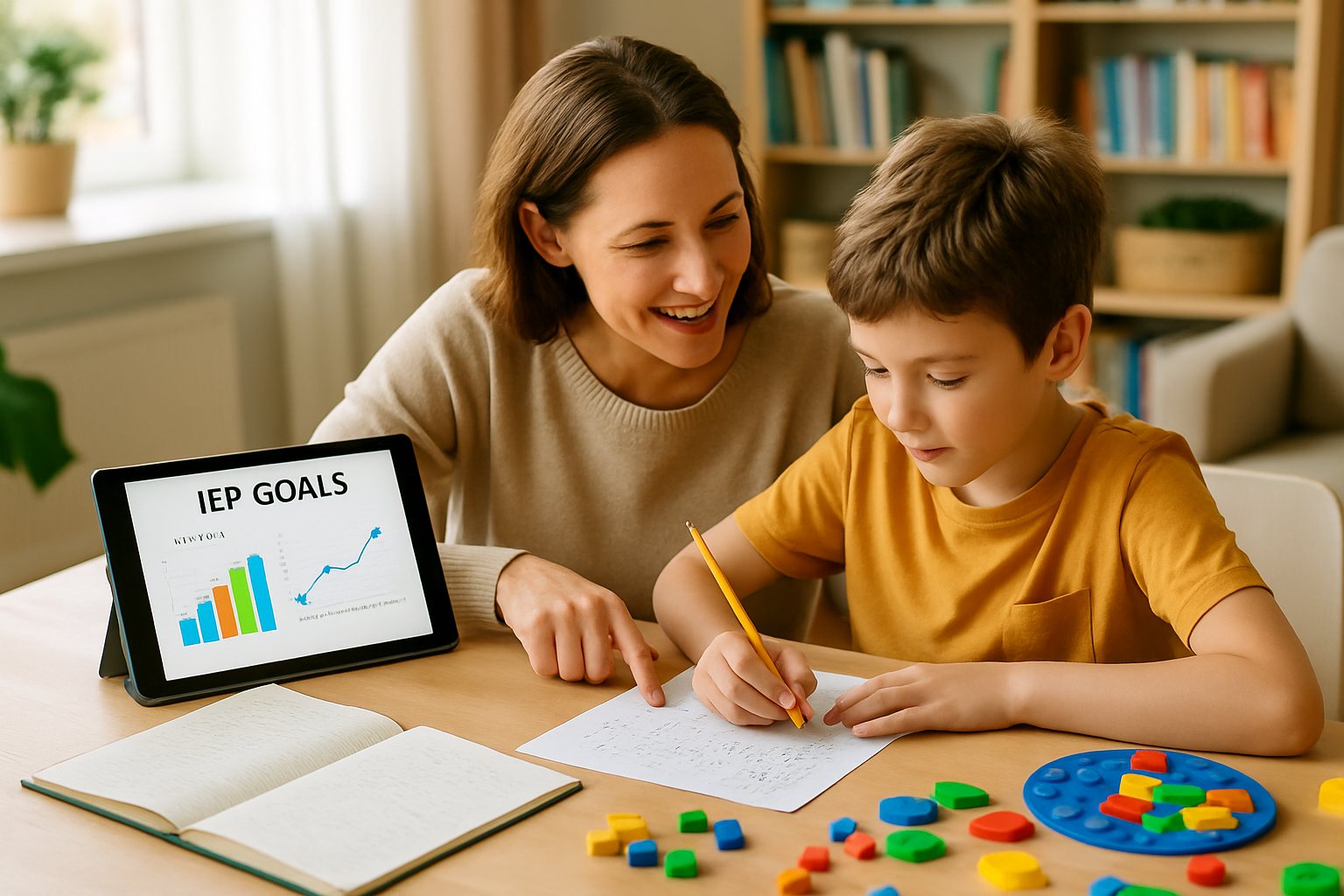
Students with special education needs require careful tracking of their IEP goals and modified assessment approaches. Parents play a key role in monitoring progress at home and working with teachers to ensure their child receives appropriate support.
Tracking IEP Goals Progress
Monitoring IEP goals and progress helps parents stay informed about their child’s development. Parents should receive regular updates from teachers about how their child is meeting specific goals.
Key tracking methods include:
- Daily behavior charts
- Weekly skill assessments
- Monthly progress reports
- Data collection sheets
Parents can create simple tracking systems at home. They might use a notebook to record when their child practices reading or completes math problems.
This helps show patterns over time. IEP goal tracking made easy becomes more manageable with consistent routines.
Parents should focus on one or two goals at a time rather than trying to track everything. Communication with teachers is essential.
Parents should ask questions about their child’s progress during meetings. They can request specific examples of how goals are being measured at school.
Adapting Assessments for Special Education
Students with special education needs often require modified assessments. Parents can use similar adaptations when checking their child’s learning at home.
Common assessment adaptations include:
- Extended time for tasks
- Simplified instructions
- Visual supports and pictures
- Hands-on activities instead of written tests
Special education progress monitoring works best when parents understand their child’s learning style. Some children learn better through movement, while others need quiet spaces.
Parents should focus on their child’s individual progress rather than comparing to other children. Small improvements matter and should be celebrated.
Formal evaluations happen at school, but parents can do informal checks at home. They might ask their child to explain what they learned or show a new skill.
This helps identify areas that need more practice. Working with the IEP team helps parents understand which assessment methods work best for their child.
Organizing, Storing, and Reviewing Progress Records
Keeping track of your child’s learning progress requires a simple system that works for your family. The key is creating an organized way to store work samples and using that information to guide future learning decisions.
Organizing Documentation Efficiently
Parents need a clear system to manage their child’s work samples and progress records. Basic homeschool records should include attendance, subjects taught, and samples of work from different points in the year.
Physical Storage Options:
- Three-ring binders with dividers for each subject
- Accordion folders organized by month or subject
- File boxes with folders for each child and year
- Storage totes for less formal organization
Digital Storage Methods:
- Take photos of completed work and store in folders
- Use online photo storage organized by date
- Create simple spreadsheets to track activities
- Scan important documents for backup copies
The most important thing is picking one method and sticking with it. Many parents find success keeping work samples from the beginning, middle, and end of each learning period.
Date each piece of work before storing it. This makes it easy to see progress over time.
Keep only the most meaningful examples rather than every single worksheet.
Reviewing Progress for Instructional Planning
Regular review of stored records helps parents make smart decisions about their child’s learning path. Look through collected work samples every few weeks to spot patterns and growth areas.
What to Look For:
- Skills that have improved since earlier samples
- Areas where the child still struggles
- Topics that need more practice or review
- Signs the child is ready for harder material
Compare current work to samples from previous months. This shows real progress that might not be obvious day-to-day.
Look for improvements in handwriting, problem-solving, or understanding of concepts. Use these insights to adjust your teaching approach.
If math samples show confusion with a concept, spend more time on that skill. If reading samples show growth, consider introducing more challenging books.
Set aside time monthly to review records with your child. This helps them see their own progress and feel proud of their growth.
Frequently Asked Questions
Parents often have specific questions about measuring their child’s academic growth and finding the right assessment tools. These common concerns range from choosing effective evaluation methods to locating affordable testing resources for different grade levels.
What are some effective methods to measure my child’s academic progress at home?
Parents can use multiple approaches to track their child’s learning progress effectively. Weekly quizzes and tests help monitor understanding in core subjects like math and reading.
Portfolio creation works well for documenting growth over time. Parents can collect their child’s essays, projects, and assignments to show development throughout the year.
Regular conversations about what the child is learning provide insight into their understanding. Parents can ask their child to explain concepts or complete short writing assignments about topics they studied.
Self-assessment activities help children reflect on their own learning. Kids can review their work and discuss what they found easy or challenging.
How can I use standardized tests to evaluate my child’s learning level?
Standardized testing is a great way to check how a student is doing compared to other students. Many standardized tests show a child’s knowledge level and areas where they need improvement.
Parents can give these tests at the end of each school year or every few years. The results help identify if their child is performing at grade level in different subjects.
Some states require homeschooled children to take standardized tests annually. Parents should check their local homeschool laws to understand testing requirements.
The scores provide objective data that parents can use to adjust their teaching methods. Low scores in specific areas show where extra practice is needed.
What are the best online resources for practice tests in reading and math for kids?
Khan Academy offers free practice exercises and assessments for multiple grade levels. Children can take quizzes to check their progress and get immediate feedback on their answers.
IXL provides comprehensive practice tests in reading and math with detailed progress tracking. The platform adapts to each child’s skill level and identifies areas needing work.
Time4Learning includes built-in assessments within their curriculum lessons. Parents can see detailed reports showing their child’s strengths and weaknesses.
Many state education departments offer free online practice tests. These tests match the standards used in public schools for each grade level.
Can I perform an accurate end-of-year assessment for my homeschooler, and how?
Parents can create comprehensive end-of-year evaluations using multiple assessment methods. Structured assessments may include online quizzes, end-of-unit tests, homework assignments, standardized tests, or portfolios.
A complete assessment should test all subjects studied during the year. Parents can use curriculum-based tests or create their own exams covering key concepts.
Portfolio reviews work well for subjects like writing and art. Parents can collect work samples from throughout the year to show progress and growth.
Some families hire educational consultants or tutors to conduct independent assessments. This provides an outside perspective on the child’s academic level.
What tools can I use to track my child’s learning milestones through the school year?
Digital gradebooks help parents record test scores and assignment grades throughout the year. Many homeschool curriculum companies provide online tracking systems with their programs.
Learning management systems like Google Classroom allow parents to organize assignments and monitor completion. These platforms store all work in one accessible location.
Progress charts and graphs help visualize improvement over time. Parents can track reading levels, math skills, or other measurable goals using simple spreadsheets.
Some curriculum companies offer additional resources to help parents track their homeschool student’s progress. These pre-made materials save time compared to creating custom tracking systems.
Where can I find free or affordable learning assessments for different grade levels?
State education websites often provide free practice tests and assessment tools. These resources align with grade-level standards and cover core subjects.
Public libraries frequently offer access to educational testing databases. Many libraries provide free computer access and printing for assessment materials.
Homeschool co-ops and support groups sometimes share assessment resources among families. Parents can split costs for commercial testing materials or curriculum assessments.
Educational websites like Education.com and Scholastic offer free worksheets and mini-assessments. These resources help parents check understanding of specific skills and concepts.
